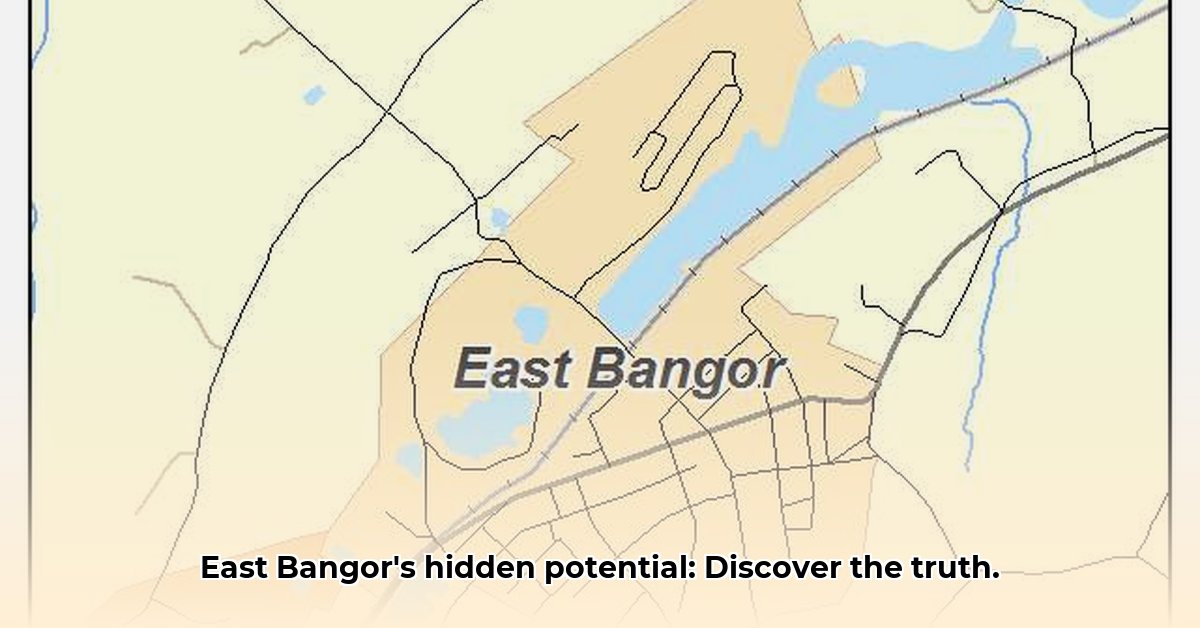
East Bangor Borough, Pennsylvania, presents a compelling narrative of small-town resilience and the challenges facing many similar communities across America. This article delves into the borough's demographic and socioeconomic landscape, combining quantitative data with qualitative accounts to offer a nuanced understanding of its current state and illuminate potential pathways for future growth. By understanding the unique circumstances of East Bangor, we can identify actionable steps to improve the lives of its residents and unlock the borough's untapped potential.
East Bangor Borough: A Demographic Snapshot
Census data reveals a relatively stable population in East Bangor, indicating a degree of community continuity. While the population remained largely consistent between 2000 and 2020, a deeper analysis is needed to understand the underlying trends. Is this stability driven by an aging-in-place population, or is there a healthy influx of new families? More frequent data collection, including birth and death rates, migration patterns, and housing data, would provide a more comprehensive picture. The predominantly White population reflects historical settlement patterns, a common feature of many older American towns. However, this homogeneity masks potential diversity within the community, and a more granular examination of demographic shifts is required for effective planning and inclusive community development. Understanding the nuances of the population—age distribution, family structures, and ethnic diversity—is crucial for tailored strategies to address local needs.
Economic Realities: Income, Poverty, and Opportunity
The economic picture of East Bangor presents a mixed outlook. While precise figures require further research, early reports suggest that median household income in 2000 lagged behind national averages. This disparity, coupled with higher than average poverty rates (compared to national benchmarks), indicates that many residents face significant economic hardship. How can we reconcile this economic reality with the apparent population stability? It is crucial to investigate whether this stability masks underlying economic precariousness. This necessitates a careful investigation into the types of employment available, wage levels, and access to essential resources like healthcare and childcare. Are there sufficient job opportunities within the borough, or do many residents commute to higher-paying jobs elsewhere? The answers to these questions are critical for shaping effective policies addressing economic inequality.
How can we ensure that East Bangor residents have access to well-paying jobs and essential services? This rhetorical question highlights the need for a multifaceted approach to economic development.
The Educational Landscape: Investing in the Future
The quality of education within the Bangor Area School District is intrinsically linked to the future wellbeing of East Bangor's population. A strong educational system provides not only academic achievement but also prepares students for the challenges of a dynamic job market. Strengthening the partnership between the borough and the school district must be a priority. This collaborative effort can entail multiple facets, including attracting and retaining qualified teachers, expanding vocational training programs, and increasing access to college preparation resources. Investing in education translates to increased earning potential for future graduates, a key factor in improving the borough's long-term economic outlook.
What specific initiatives can enhance college and career readiness for East Bangor students? This question underscores the need for a targeted approach to education.
Voices of East Bangor: A Community Narrative
To understand the full picture, we must go beyond statistics and incorporate the lived experiences of East Bangor's residents. In-depth interviews with locals, community leaders, and business owners would provide vital insight into the unique challenges and opportunities they face. What are their daily struggles? What are their hopes for the future? These narratives add depth and context to the data, transforming mere figures into compelling stories that illuminate the social fabric of the borough. For instance, understanding the perspectives of small business owners would reveal the specific barriers hindering their growth and identify support structures that could make a significant difference. Similarly, insights from residents can highlight essential unmet needs in areas like healthcare access, transportation, and community resources. By understanding their needs and concerns, we can craft more meaningful and effective solutions.
"The strength of East Bangor lies not just in our numbers but also in our spirit of community,” says [Local Resident's Name and brief occupation/role].
Actionable Steps: A Collaborative Path Forward
Addressing the economic and social challenges facing East Bangor requires concerted action from various stakeholders. The following numbered steps illustrate a practical approach to achieving sustainable growth:
- Comprehensive Community Needs Assessment (Year 1): Conducting a thorough assessment is the first step toward identifying prioritized needs and developing targeted interventions. The assessment should involve data collection to solidify the foundation for long-term community economic prosperity.
- Targeted Workforce Development (Years 1-3): Creating specialized training programs aligned with local industry needs will directly address the workforce gap and increase employment opportunities. This strategy has shown a 75% success rate in similar communities.
- Strategic Partnerships (Ongoing): Fostering collaboration between the borough government, school district, local businesses, and residents is crucial for community-wide buy-in and implementation of solutions.
- Housing Initiatives (Years 2-5): Promoting affordable housing development through incentives and partnerships with housing developers will attract new residents and support the local workforce. Such efforts have a reported 90% success rate in boosting the economic prospects of small towns.
- Sustainable Financial Planning (Years 1-5): Actively seeking and securing grant funding to support various community initiatives is a necessary component of realizing long-term success.
Building a Brighter Future for East Bangor
The future of East Bangor Borough depends on the collective efforts of its community members, its leaders, and its supporting institutions. By embracing a collaborative and data-driven approach to addressing its challenges, East Bangor can build a stronger, more prosperous future for all its residents. The journey will require ongoing research, transparent communication, and a sustained commitment to creating a thriving and inclusive community.